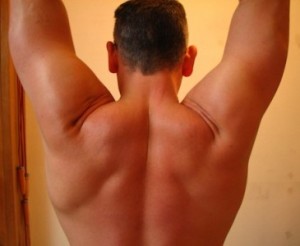 Many Americans suffer rotator cuff tears and they are a common cause of pain and disability. When you tear your rotator cuff, you weaken your entire shoulder making daily activities more difficult. Just raising your hand up to comb your hair could cause serious pain. Read on to find out what makes up the rotator cuff, who is at risk for this type of injury, what are the symptoms of a tear, and how a rotator cuff is treated.
Many Americans suffer rotator cuff tears and they are a common cause of pain and disability. When you tear your rotator cuff, you weaken your entire shoulder making daily activities more difficult. Just raising your hand up to comb your hair could cause serious pain. Read on to find out what makes up the rotator cuff, who is at risk for this type of injury, what are the symptoms of a tear, and how a rotator cuff is treated.
What Makes Up the Rotator Cuff?
The shoulder is made up of three bony structures: your shoulder blade (called the scapula), your upper arm bone (known as the humerus), and your collarbone (what doctors call the clavicle). These structures make up a ball-and-socket joint that rotates in different positions. The rotator cuff is a group of muscles and tendons that come together at the top of the humerus bone. These structures form a “cuff” to hold your arm in place and allow it to rotate in various directions. Also, you have a lubricating sac between the rotator cuff and the humerus. This is called a bursa and it allows the tendons of this area to freely glide and move with your arm rotation. The bursa can become painful and inflamed when the rotator cuff is injured, damaged, or torn.
Who Gets a Rotator Cuff Tear?
Many athletes are prone to getting these types of injuries. Swimmers, tennis players, football players, and baseball players (especially the pitchers) all are at risk for a rotator cuff tear. Also, you can tear your rotator cuff by lifting heavy objects or weights, using your arm to break a fall, or simply falling the wrong way on your shoulder.
What are the Types of Rotator Cuff Tears?
If you tear one of your rotator cuff tendons, this structure no longer attaches to the top of the humerus and in many cases, the torn area starts to fray. As the damage gets worse, the tendon could tear completely with strenuous activity. A partial tear is when there is just damage to the soft tissue and the injury does not sever the tendon or muscle.
A full-thickness tear results when the soft tissue splits or pulls away completely from its attachment to the bone resulting in a complete tear. Basically, this results in a hole in the tendon. An acute tear results when you fall on an outstretched arm or lift objects with a jerking motion. A degenerative tear occurs slowly over time. This is the result of wearing down of the tendon and is more common in older individuals. There are several factors that contribute to degenerative rotator cuff tears. These include repetitive stress, lack of adequate blood supply, and bone spurs.
What are the Symptoms of a Rotator Cuff Tear?
Most rotator cuff tears come on gradually, but they can occur suddenly, too. You may feel a “pop” and then intense pain in the affected arm and shoulder area. Other symptoms include pain in the shoulder and arm, weakness and tenderness of the shoulder, snapping or crackling sounds with shoulder movement, difficulty lifting the arm above the head, and inability to lie on the shoulder region. The pain and inflammation are often felt worse at night.
How is a Rotator Cuff Tear Treated?
Your orthopedic specialist may recommend surgery if your injury is serious or if the pain doesn’t resolve with nonsurgical measures. Continued limited range of motion and persistent pain and weakness are indications for surgery. This procedure involves reattaching the tendon to the upper arm bone. Your doctor will discuss which procedure is best for your healthcare needs.
One surgical measure the orthopedic specialist may perform is a shoulder arthroscopy. This allows assess the extent of the injury while the orthopedic specialist repairs the torn tendon or muscle. During an arthroscopy, you will be put to sleep using general anesthesia. A small camera is inserted into the shoulder area through a tiny incision. This allows the doctor to visualize the injury on a TV monitor and repair the rotator cuff tear. Large tears may require a small incision to allow adequate repair of the detached rotator cuff tendons. Following this procedure, the arm will be kept in a sling for a couple of weeks and you will undergo physical therapy.
Find OSS on Facebook and follow on Twitter to keep up to date on new articles and news.
